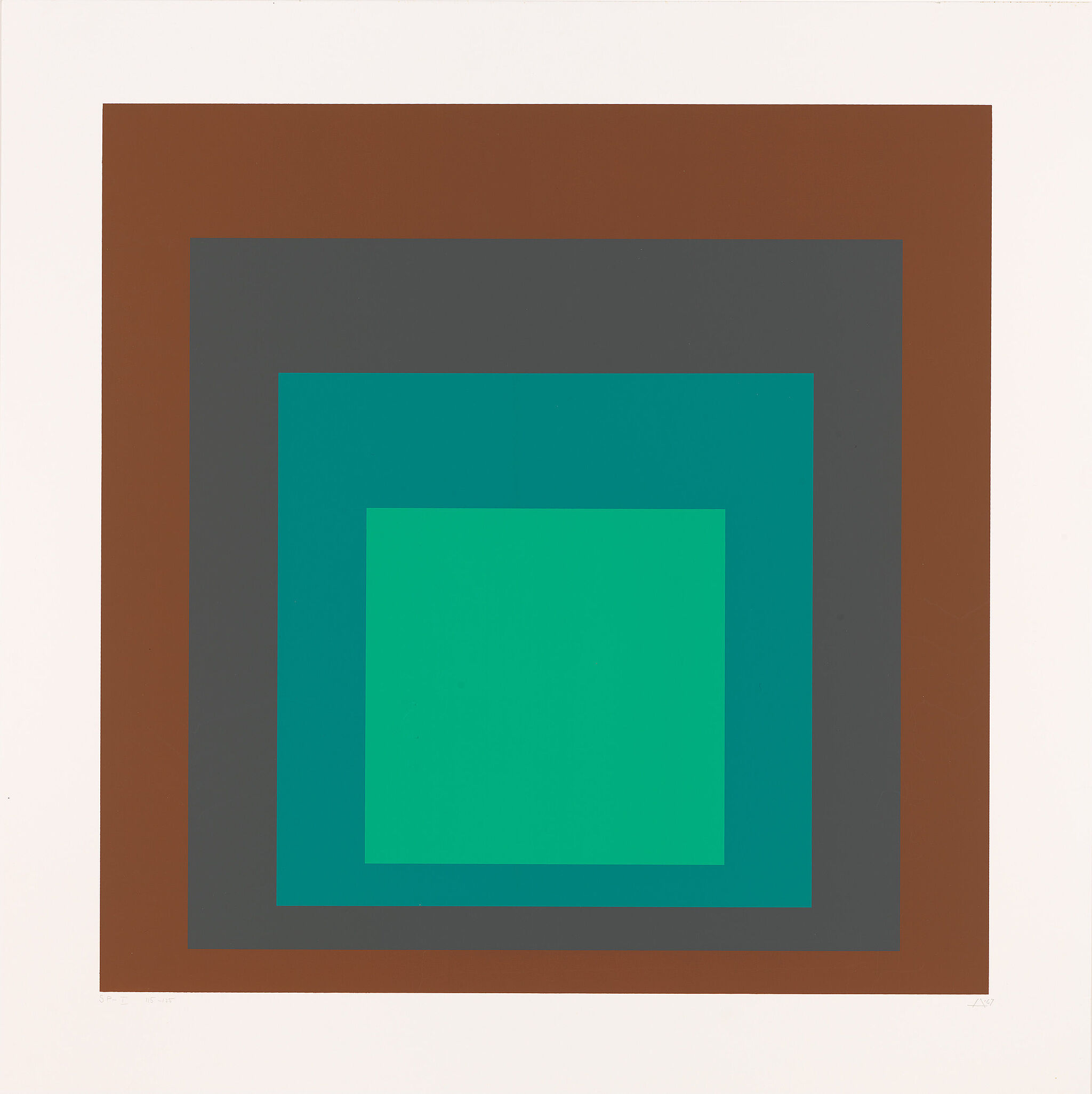Programmed: Rules, Codes, and Choreographies in Art, 1965–2018 | Art & Artists
Sept 28, 2018–Apr 14, 2019
Programmed: Rules, Codes, and Choreographies in Art, 1965–2018 | Art & Artists
Rule, Instruction, Algorithm:
Ideas as Form
1
Artists have long used instructions and abstract concepts to produce their work, employing mathematical principles, creating thought diagrams, or establishing rules for variations of color. Conceptual art—a movement that began in the late 1960s—went a step further, explicitly emphasizing the idea as the driving force behind the form of the work. In his “Paragraphs on Conceptual Art” (1967), Sol LeWitt wrote: “The plan would design the work. Some plans would require millions of variations, and some a limited number, but both are finite. Other plans imply infinity.” The works in this grouping—from Sol LeWitt’s large-scale wall drawing and Josef Albers’s series of nesting colored squares and rectangles to Lucinda Childs’s dances and Joan Truckenbrod’s computer drawings—all directly address the rules and instructions used in their creation. Essential to each is an underlying system that allows the artist to generate variable images and objects.
Josef Albers, Homage to the Square I, 1967
Josef Albers began his Homage to the Square series in the summer of 1949 and made more than a thousand related works over the next twenty-five years. He developed four layouts, three composed of three squares each and the fourth composed of four squares. “The scheme of the Homages has no real aesthetic consequences by itself,” he explained. “There were hundreds of possibilities, but since my main problem is color . . . let’s have a scheme, a cooking pot that cooks for four people, and no more. Therefore, let the colors react in the prison in which I put them.” Like a composer writing variations on a single melodic theme, Albers created countless color combinations in which the effect of individual colors changes markedly from work to work, demonstrating the variability of our perception of color.
Artists
- Josef Albers
- Cory Arcangel
- Tauba Auerbach
- Jonah Brucker-Cohen
- Jim Campbell
- Ian Cheng
- Lucinda Childs
- Charles Csuri
- Agnes Denes
- Alex Dodge
- Charles Gaines
- Philip Glass
- Frederick Hammersley
- Channa Horwitz
- Donald Judd
- Joseph Kosuth
- Shigeko Kubota
- Marc Lafia
- Barbara Lattanzi
- Lynn Hershman Leeson
- Sol LeWitt
- Fang-yu Lin
- Manfred Mohr
- Katherine Moriwaki
- Mendi + Keith Obadike
- Nam June Paik
- William Bradford Paley
- Paul Pfeiffer
- Casey Reas
- Earl Reiback
- Rafaël Rozendaal
- Lillian Schwartz
- James L. Seawright
- John F. Simon Jr.
- Steina
- Mika Tajima
- Tamiko Thiel
- Cheyney Thompson
- Joan Truckenbrod
- Siebren Versteeg
- Lawrence Weiner

